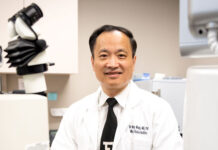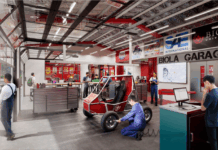By Ahmes Labib Pahor —
In the Bible book of Proverbs (20:12) we read: “Ears that hear and eyes that see, the Lord has made them both”.
With our ears we hear sounds coming from any direction around us, and if we cannot visualize the source, we turn our head to see. Even in our sleep, sounds can wake us up. Sound is the number one sense that attracts our attention and gives an idea of the source, benign or maline, “friend or foe”. Hearing is the last sense to go in anaesthesia and also in death.
As an embryo grows and the different body systems develop, the inner ear fully develops at 20 weeks and the fetus can hear. The fetal hair cells remain the same till we die, thus the need to look after them throughout life. Babes in their mothers’ wombs react to sounds and can differentiate between melodious music and loud disconcerted bangs.

Sound propagates in any medium, be it gas (air), liquid (water), or solid. We hear when the sound waves strike our ear drum and this in turn moves the three small bones in our middle ears. The smallest of these, the stapes, when it moves, causes the fluid in the inner ear to move too. This action in turn stimulates the inner ear cells responsible for hearing, the hair cells. When the latter are stimulated, they induce a firing of the neurons of the hearing nerve, and these waves travel to the brain.

The nerve impulses go first in the lower (and oldest) part of the brain, the brain stem. This is where impulses from other senses gather as well. The earliest memories of our lives are stored there, even before the full development of our brain cortex which gives us consciousness of the world we live in and what it means. This area is closely connected to the Limbic system, that is of memory and reward. A pleasant reassuring sound, be it of nature, induced, or of human, gives a sense of comfort, warmth, and love. Young children attending church services benefit from prayers, hymns, and melodies.

As children grow, they start to be aware of words and their meanings. Nobody instructs a child that such is a noun or such is a verb, yet the child acquires language, that is an innate character of being human. As to pronunciation, children start to modulate their voices to the intonations and modalities of their native tongue. If a child is exposed early on to two languages, he or she acquires the characteristics of both languages without much difficulty. It was found that bilingual children do better at school. The same was found with children who learn music; music being another language. Learning a new language by mature adults stimulates their brains and helps them stave off Alzheimer.

Adults can learn new languages and general experience, finding associations, comparisons and many other features that lend them a helping hand in this endeavor. More than half the world population are bilingual. The Coptic church uses both Coptic and Arabic. In the Diaspora, the local language is added. Coptic is the nearest anybody could hear of how the ancient Egyptians used to speak.
Language wise, there is a difference between hearing and listening. Scientists found that attention and listening help memory, this applying to all ages.
Love of music is universal, but many young people today tend to listen to very loud music, even when they have earphones. This exposure to loud noise could damage the sense of hearing. Once damaged, the hair cells in the cochlea do not recover. I have seen early signs of such damage in teenagers. In jobs where there is exposure to loud noises, wearing ear protectors could save the sense of hearing. God gave us this beautiful, useful, valuable sense and we should do our best to protect it.

The sound we hear reaches our brain in several areas. The temporal lobe of the brain, situated roughly opposite our ears, is the main area; Broca’s area is responsible for speech; Wernicke’s area, further back, responsible for comprehension; the Hippocampus is for learning and memory, the latter is re-enforced in the re-frontal cortex. Functional MRI (fMRI) studies of top singers found that the whole brain literally lights up. The areas of speech, hearing, muscles of voice production, memory, limbic system, all are active. The more one is wholeheartedly involved in the act, the more the sense that “the soul is escaping to the open”.
In a noisy environment, our brains have an incredible ability to filter out the words that matter most to us, like if our name is mentioned. Our brains receive a countless number of sensory stimuli during our waking hours. During sleep, brains sort out what should be put into our memory banks, the most important we encountered during the day. This is one of the many acts our body is busy doing during sleep.

An analogy between seeing and hearing, two of our most vital senses, reveals interesting facts. We have two eyes, and this helps us locate the distance of objects we see (stereoscopic vision). Our two ears help us to locate the direction and site of the sound. Our eyes are visibly exposed so as to see and scan all around us. Eyes are well protected in their sockets, and so too the inner ear, the cochlea, is housed in the strongest bone in our body. With the sense of hearing is also the organs that make us aware of our position in relation to our surrounding, and our balance. All our senses and functions are important, hearing and balance are fundamental to our existence. No wonder the Creator placed them together inside this most protective bone; also, withstanding the squeeze in the birth passage during delivery.

Hearing being a quality of such great impact on humans, it is small wonder that deafness is the disability with the most psychological problems. Hearing loss however, should cause no grave concern; wearing a hearing aid is just like wearing glasses! — Watani International
—————————
Ahmes Labib Pahor FRCS,DHMSA(UK),FICS(USA), Dip.ICS(Egypt), PhD.Hist.Med.(Netherlands). He has many publications in the History of Medicine especially Pharaonic Medicine, also in Coptic History and Language of which he is a diligent researcher.



